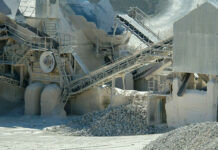KARACHI: In the midst of rising inflation, economic uncertainty and falling business confidence the country’s banking sector has continued to post skyrocketing profits. The first half of this fiscal year saw banks double profits from Rs 126.2 billion in the same period last year to an impressive Rs 284.5 billion.
The asset base of the banking sector also experienced significant growth, expanding by 14 percent from January to June 2023, compared to a 16 percent increase during the same period in the previous year, ultimately reaching an astonishing Rs 40.8 trillion. The driving force behind this growth was primarily investments, constituting 52.7 percent of the asset base, while advances, or loans to the private sector, remained subdued.
There has also been a marked slowdown in domestic private sector advances during H1CY23, which contracted by 7 percent, in stark contrast to the 6.8 percent growth observed in the corresponding period last year.
What is up with the increasing investments?
A significant contributing factor to the increase in investments was the increasing reliance on government securities within banks’ investment portfolios. By the end of June 2023, government securities and total investments accounted for 49.6 percent and 52.7 percent, respectively.
Despite a challenging economic landscape, banks also witnessed a notable increase in their deposits, rising by 14.2 percent during H1CY23 to reach Rs 26.8 trillion by the end of June 2023. This influx of deposits, coupled with a slower pace of lending, led to a decline in the Advances to Deposits Ratio (ADR) from 50.4 percent in December 2022 to 45.0 percent.
The remarkable surge in profits can largely be attributed to higher net interest income, driven by rising interest rates. The SBP policy rate saw a cumulative increase of 600 basis points during H1CY23. While interest income doubled to Rs 2723.1 billion in H1CY23 compared to the same period in the previous year, interest expenses also more than doubled to Rs 1882.1 billion.
While the increase in interest rates played a significant role in boosting banks’ income from advances and investments, the expansion in the volume of these assets also contributed to the growth in interest income. However, non-interest expenses increased by 31.9 percent during H1CY23, surpassing last year’s figures.
Outlook for next half of 2023
As the banking sector looks to the second half of 2023, its performance will be contingent on the operating environment and evolving policy stance. Furthermore, the results of the latest stress tests indicate that the banking sector is expected to display resilience in the face of severe macroeconomic shocks over the next two years. Expectations for the banking sector in the coming months include continued steady performance, driven by investments to meet the government’s borrowing needs. Advances are also anticipated to rise in the final quarter of CY23, especially in sectors like textiles and sugar, which could boost credit demand.
While the banking sector is likely to maintain its operating performance, the impact of higher interest rates may pose challenges in terms of high-interest expenses. Nevertheless, steady earnings are expected to support solvency and improve capital adequacy ratios. Though aggregate demand containment and stressed financial conditions may raise credit risk concerns, the sector’s exposure to corporate borrowers with robust creditworthiness is expected to safeguard asset quality. However, reducing the banking sector’s reliance on government borrowing remains a pressing need to ensure long-term fiscal stability.

























Thank you really very much. Your article has given me a lot of useful information. Hope you will continue to have useful articles in the future.
Nice Informative Blog having nice sharing..
I really appreciate the kind of topics you post here. Thanks for sharing us a great information that is actually helpful. Good day!
I really appreciate the kind of topics you post here. Thanks for sharing us a great information that is actually helpful. Good day!
I really appreciate the kind of topics you post here. Thanks for sharing us a great information that is actually helpful. Good day!
This is such a great resource that you are providing and you give it away for free.
thanks for this usefull article, waiting for this article like this again.
I really appreciate the kind of topics you post here. Thanks for sharing us a great information that is actually helpful. Good day!
This is such a great resource that you are providing and you give it away for free. I love seeing websites that understand the value of providing a quality resource for free. It is the old what goes around comes around routine.
Thanks for a wonderful share. Your article has proved your hard work and experience you have got in this field. Brilliant .i love it reading.
This is such a great resource that you are providing and you give it away for free. I love seeing websites that understand the value of providing a quality resource for free. It is the old what goes around comes around routine.
This is my first time i visit here. I found so many interesting stuff in your blog especially its discussion. From the tons of comments on your articles, I guess I am not the only one having all the enjoyment here! keep up the good work
I really appreciate the kind of topics you post here. Thanks for sharing us a great information that is actually helpful. Good day!
thanks for this usefull article, waiting for this article like this again.
thanks for this usefull article, waiting for this article like this again.
I am hoping the same best effort from you in the future as well. In fact your creative writing skills has inspired me.
I appreciated your work very thanks
thanks for this usefull article, waiting for this article like this again.
thanks for this usefull article, waiting for this article like this again.
Thanks for the post and great tips..even I also think that hard work is the most important aspect of getting success..
Thanks for sharing the info, keep up the good work going…. I really enjoyed exploring your site. good resource…
Your blog provided us with valuable information to work with. Each & every tips of your post are awesome. Thanks a lot for sharing. Keep blogging,
Thanks for sharing the info, keep up the good work going…. I really enjoyed exploring your site. good resource…
i love reading this article so beautiful!!great job!
Thanks for sharing the info, keep up the good work going…. I really enjoyed exploring your site. good resource…
Love to read it,Waiting For More new Update and I Already Read your Recent Post its Great Thanks.
Most of the time I don’t make comments on websites, but I’d like to say that this article really forced me to do so. Really nice post!
very interesting keep posting.
very interesting keep posting.
This is such a great resource that you are providing and you give it away for free. I love seeing websites that understand the value of providing a quality resource for free. It is the old what goes around comes around routine.
Thank you again for all the knowledge you distribute,Good post. I was very interested in the article, it’s quite inspiring I should admit. I like visiting you site since I always come across interesting articles like this one.Great Job, I greatly appreciate that.Do Keep sharing! Regards,
Most of the time I don’t make comments on websites, but I’d like to say that this article really forced me to do so. Really nice post!
I found your this post while searching for some related information on blog search…Its a good post..keep posting and update the information.
Your blog provided us with valuable information to work with. Each & every tips of your post are awesome. Thanks a lot for sharing. Keep blogging,
thank you for a great post.
Thanks for the post and great tips..even I also think that hard work is the most important aspect of getting success..
I found your this post while searching for some related information on blog search…Its a good post..keep posting and update the information.
Thanks for your information, it was really very helpfull..
Thanks for a wonderful share. Your article has proved your hard work and experience you have got in this field. Brilliant .i love it reading.
Thanks for your information, it was really very helpfull..
Thank you for taking the time to publish this information very useful!
I am hoping the same best effort from you in the future as well. In fact your creative writing skills has inspired me.
Your website is really cool and this is a great inspiring article. Thank you so much.
i read a lot of stuff and i found that the way of writing to clearifing that exactly want to say was very good so i am impressed and ilike to come again in future..
Thanks for sharing nice information with us. i like your post and all you share with us is uptodate and quite informative, i would like to bookmark the page so i can come here again to read you, as you have done a wonderful job.
Nice Informative Blog having nice sharing..
Love to read it,Waiting For More new Update and I Already Read your Recent Post its Great Thanks.
Thank you again for all the knowledge you distribute,Good post. I was very interested in the article, it’s quite inspiring I should admit. I like visiting you site since I always come across interesting articles like this one.Great Job, I greatly appreciate that.Do Keep sharing! Regards,
Thank you again for all the knowledge you distribute,Good post. I was very interested in the article, it’s quite inspiring I should admit. I like visiting you site since I always come across interesting articles like this one.Great Job, I greatly appreciate that.Do Keep sharing! Regards,
Thank you again for all the knowledge you distribute,Good post. I was very interested in the article, it’s quite inspiring I should admit. I like visiting you site since I always come across interesting articles like this one.Great Job, I greatly appreciate that.Do Keep sharing! Regards,
Thank you again for all the knowledge you distribute,Good post. I was very interested in the article, it’s quite inspiring I should admit. I like visiting you site since I always come across interesting articles like this one.Great Job, I greatly appreciate that.Do Keep sharing! Regards,
Thank you again for all the knowledge you distribute,Good post. I was very interested in the article, it’s quite inspiring I should admit. I like visiting you site since I always come across interesting articles like this one.Great Job, I greatly appreciate that.Do Keep sharing! Regards,
Thanks for the post and great tips..even I also think that hard work is the most important aspect of getting success..
Thanks for the post and great tips..even I also think that hard work is the most important aspect of getting success..
Your blog provided us with valuable information to work with. Each & every tips of your post are awesome. Thanks a lot for sharing. Keep blogging,
thank you for a great post.
Thank you again for all the knowledge you distribute,Good post. I was very interested in the article, it’s quite inspiring I should admit. I like visiting you site since I always come across interesting articles like this one.Great Job, I greatly appreciate that.Do Keep sharing! Regards,
Thank you for taking the time to publish this information very useful!
Your blog provided us with valuable information to work with. Each & every tips of your post are awesome. Thanks a lot for sharing. Keep blogging,
Thank you again for all the knowledge you distribute,Good post. I was very interested in the article, it’s quite inspiring I should admit. I like visiting you site since I always come across interesting articles like this one.Great Job, I greatly appreciate that.Do Keep sharing! Regards,
I really appreciate the kind of topics you post here. Thanks for sharing us a great information that is actually helpful. Good day!
I really appreciate the kind of topics you post here. Thanks for sharing us a great information that is actually helpful. Good day!
I really appreciate the kind of topics you post here. Thanks for sharing us a great information that is actually helpful. Good day!
Thanks for sharing the info, keep up the good work going…. I really enjoyed exploring your site. good resource…
I really appreciate the kind of topics you post here. Thanks for sharing us a great information that is actually helpful. Good day!
Thanks for a wonderful share. Your article has proved your hard work and experience you have got in this field. Brilliant .i love it reading.
i read a lot of stuff and i found that the way of writing to clearifing that exactly want to say was very good so i am impressed and ilike to come again in future..
This is very educational content and written well for a change. It’s nice to see that some people still understand how to write a quality post!
This is my first time i visit here. I found so many interesting stuff in your blog especially its discussion. From the tons of comments on your articles, I guess I am not the only one having all the enjoyment here! keep up the good work
Thank you for taking the time to publish this information very useful!
Thanks for the post and great tips..even I also think that hard work is the most important aspect of getting success..
thank you for a great post.
I am hoping the same best effort from you in the future as well. In fact your creative writing skills has inspired me.
Thanks for a great blog. I was able to get the information that I had been looking for. Thanks once again!
I really appreciate the kind of topics you post here. Thanks for sharing us a great information that is actually helpful. Good day!
Thanks for sharing nice information with us. i like your post and all you share with us is uptodate and quite informative, i would like to bookmark the page so i can come here again to read you, as you have done a wonderful job.
I really appreciate the kind of topics you post here. Thanks for sharing us a great information that is actually helpful. Good day!
I really appreciate the kind of topics you post here. Thanks for sharing us a great information that is actually helpful. Good day!
Thanks for sharing the info, keep up the good work going…. I really enjoyed exploring your site. good resource…
Thanks for sharing the info, keep up the good work going…. I really enjoyed exploring your site. good resource…
I really appreciate the kind of topics you post here. Thanks for sharing us a great information that is actually helpful. Good day!
I really appreciate the kind of topics you post here. Thanks for sharing us a great information that is actually helpful. Good day!
New web site is looking good. Thanks for the great effort.
Thank you again for all the knowledge you distribute,Good post. I was very interested in the article, it’s quite inspiring I should admit. I like visiting you site since I always come across interesting articles like this one.Great Job, I greatly appreciate that.Do Keep sharing! Regards,
I appreciated your work very thanks
New web site is looking good. Thanks for the great effort.
New web site is looking good. Thanks for the great effort.
Thank you again for all the knowledge you distribute,Good post. I was very interested in the article, it’s quite inspiring I should admit. I like visiting you site since I always come across interesting articles like this one.Great Job, I greatly appreciate that.Do Keep sharing! Regards,
Wow i can say that this is another great article as expected of this blog.Bookmarked this site..
This is such a great resource that you are providing and you give it away for free. I love seeing websites that understand the value of providing a quality resource for free. It is the old what goes around comes around routine.
New web site is looking good. Thanks for the great effort.
This is such a great resource that you are providing and you give it away for free. I love seeing websites that understand the value of providing a quality resource for free. It is the old what goes around comes around routine.
New web site is looking good. Thanks for the great effort.
Thank you again for all the knowledge you distribute,Good post. I was very interested in the article, it’s quite inspiring I should admit. I like visiting you site since I always come across interesting articles like this one.Great Job, I greatly appreciate that.Do Keep sharing! Regards,
I appreciated your work very thanks
This is such a great resource that you are providing and you give it away for free. I love seeing websites that understand the value of providing a quality resource for free. It is the old what goes around comes around routine.
New web site is looking good. Thanks for the great effort.
Wow i can say that this is another great article as expected of this blog.Bookmarked this site..
This is very educational content and written well for a change. It’s nice to see that some people still understand how to write a quality post!
I appreciated your work very thanks
I am hoping the same best effort from you in the future as well. In fact your creative writing skills has inspired me.
New web site is looking good. Thanks for the great effort.
Wow i can say that this is another great article as expected of this blog.Bookmarked this site..
Thank you again for all the knowledge you distribute,Good post. I was very interested in the article, it’s quite inspiring I should admit. I like visiting you site since I always come across interesting articles like this one.Great Job, I greatly appreciate that.Do Keep sharing! Regards,
Thank you again for all the knowledge you distribute,Good post. I was very interested in the article, it’s quite inspiring I should admit. I like visiting you site since I always come across interesting articles like this one.Great Job, I greatly appreciate that.Do Keep sharing! Regards,
Thank you again for all the knowledge you distribute,Good post. I was very interested in the article, it’s quite inspiring I should admit. I like visiting you site since I always come across interesting articles like this one.Great Job, I greatly appreciate that.Do Keep sharing! Regards,
I appreciated your work very thanks
Wow i can say that this is another great article as expected of this blog.Bookmarked this site..
I appreciated your work very thanks
thank you for a great post.
i read a lot of stuff and i found that the way of writing to clearifing that exactly want to say was very good so i am impressed and ilike to come again in future..
I really appreciate the kind of topics you post here. Thanks for sharing us a great information that is actually helpful. Good day!
I really appreciate the kind of topics you post here. Thanks for sharing us a great information that is actually helpful. Good day!
I am hoping the same best effort from you in the future as well. In fact your creative writing skills has inspired me.
I really appreciate the kind of topics you post here. Thanks for sharing us a great information that is actually helpful. Good day!
Yes i am totally agreed with this article and i just want say that this article is very nice and very informative article.I will make sure to be reading your blog more. You made a good point but I can’t help but wonder, what about the other side? !!!!!!THANKS!!!!!!
thanks for this usefull article, waiting for this article like this again.
i read a lot of stuff and i found that the way of writing to clearifing that exactly want to say was very good so i am impressed and ilike to come again in future..
Thanks for the post and great tips..even I also think that hard work is the most important aspect of getting success..
Thanks For sharing this Superb article.I use this Article to show my assignment in college.it is useful For me Great Work.
This is my first time i visit here. I found so many interesting stuff in your blog especially its discussion. From the tons of comments on your articles, I guess I am not the only one having all the enjoyment here! keep up the good work
Thanks for sharing nice information with us. i like your post and all you share with us is uptodate and quite informative, i would like to bookmark the page so i can come here again to read you, as you have done a wonderful job.
Please share more like that.
Thanks for sharing nice information with us. i like your post and all you share with us is uptodate and quite informative, i would like to bookmark the page so i can come here again to read you, as you have done a wonderful job.
New web site is looking good. Thanks for the great effort.
Thank you again for all the knowledge you distribute,Good post. I was very interested in the article, it’s quite inspiring I should admit. I like visiting you site since I always come across interesting articles like this one.Great Job, I greatly appreciate that.Do Keep sharing! Regards,
Thank you again for all the knowledge you distribute,Good post. I was very interested in the article, it’s quite inspiring I should admit. I like visiting you site since I always come across interesting articles like this one.Great Job, I greatly appreciate that.Do Keep sharing! Regards,
Thank you again for all the knowledge you distribute,Good post. I was very interested in the article, it’s quite inspiring I should admit. I like visiting you site since I always come across interesting articles like this one.Great Job, I greatly appreciate that.Do Keep sharing! Regards,
i love reading this article so beautiful!!great job!
New web site is looking good. Thanks for the great effort.
Thank you again for all the knowledge you distribute,Good post. I was very interested in the article, it’s quite inspiring I should admit. I like visiting you site since I always come across interesting articles like this one.Great Job, I greatly appreciate that.Do Keep sharing! Regards,
i love reading this article so beautiful!!great job!
En Cefa, creemos en la construcción de relaciones sólidas basadas en la confianza y el compromiso. Sabemos que confiar el cuidado de sus seres queridos a otra persona es una decisión significativa, y es por eso que nos esforzamos por establecer una conexión auténtica con cada familia que atendemos. La confianza es la base de nuestra labor, y nos comprometemos a brindar cuidados con el respeto y la dedicación que cada individuo merece.
Thanks for sharing nice information with us. i like your post and all you share with us is uptodate and quite informative, i would like to bookmark the page so i can come here again to read you, as you have done a wonderful job.
I really appreciate the kind of topics you post here. Thanks for sharing us a great information that is actually helpful. Good day!
Thank you again for all the knowledge you distribute,Good post. I was very interested in the article, it’s quite inspiring I should admit. I like visiting you site since I always come across interesting articles like this one.Great Job, I greatly appreciate that.Do Keep sharing! Regards,
I really appreciate the kind of topics you post.
I’ve received my parcel Iit’s incredible, I love its quality and the colour is fantastic.
Thank you again for all the knowledge you distribute,Good post. I was very interested in the article, it’s quite inspiring I should admit. I like visiting you site since I always come across interesting articles like this one.Great Job, I greatly appreciate that.Do Keep sharing! Regards,
The Cyber Express brings you all the latest cybersecurity news, Hacker news and updates to help you stay ahead of the curve. Keep reading to stay safe online!
I appreciated your work very thanks
Wow i can say that this is another great article as expected of this blog.Bookmarked this site..
Thank you again for all the knowledge you distribute,Good post. I was very interested in the article, it’s quite inspiring I should admit. I like visiting you site since I always come across interesting articles like this one.Great Job, I greatly appreciate that.Do Keep sharing! Regards,
Thank you again for all the knowledge you distribute,Good post. I was very interested in the article, it’s quite inspiring I should admit. I like visiting you site since I always come across interesting articles like this one.Great Job, I greatly appreciate that.Do Keep sharing! Regards,
thanks this is good blog.
Thank you again for all the knowledge you distribute,Good post. I was very interested in the article, it’s quite inspiring I should admit. I like visiting you site since I always come across interesting articles like this one.Great Job, I greatly appreciate that.Do Keep sharing! Regards,
Thank you for the update, very nice site..
Great! It sounds good. Thanks for sharing..
Thank you again for all the knowledge you distribute,Good post. I was very interested in the article, it’s quite inspiring I should admit. I like visiting you site since I always come across interesting articles like this one.Great Job, I greatly appreciate that.Do Keep sharing! Regards,
i read a lot of stuff and i found that the way of writing to clearifing that exactly want to say was very good so i am impressed and ilike to come again in future..
I am hoping the same best effort from you in the future as well. In fact your creative writing skills has inspired me.
I am hoping the same best effort from you in the future as well. In fact your creative writing skills has inspired me.
I am hoping the same best effort from you in the future as well. In fact your creative writing skills has inspired me.
i read a lot of stuff and i found that the way of writing to clearifing that exactly want to say was very good so i am impressed and ilike to come again in future..
Thank you again for all the knowledge you distribute,Good post. I was very interested in the article, it’s quite inspiring I should admit. I like visiting you site since I always come across interesting articles like this one.Great Job, I greatly appreciate that.Do Keep sharing! Regards,
New web site is looking good. Thanks for the great effort.
I am hoping the same best effort from you in the future as well. In fact your creative writing skills has inspired me.
I am hoping the same best effort from you in the future as well. In fact your creative writing skills has inspired me.
I am hoping the same best effort from you in the future as well. In fact your creative writing skills has inspired me.
I am hoping the same best effort from you in the future as well. In fact your creative writing skills has inspired me.
I am hoping the same best effort from you in the future as well. In fact your creative writing skills has inspired me.
I am hoping the same best effort from you in the future as well. In fact your creative writing skills has inspired me.
I can see that you are an expert at your field! I am launching a website soon, and your information will be very useful for me.. Thanks for all your help and wishing you all the success in your business.
I am hoping the same best effort from you in the future as well. In fact your creative writing skills has inspired me.
Thank you for taking the time to publish this information very useful!
I am hoping the same best effort from you in the future as well. In fact your creative writing skills has inspired me.
I am hoping the same best effort from you in the future as well. In fact your creative writing skills has inspired me.
SEO AI Writers
thank you for a great post.
This is very educational content and written well for a change. It’s nice to see that some people still understand how to write a quality post!
I am hoping the same best effort from you in the future as well. In fact your creative writing skills has inspired me.
I am hoping the same best effort from you in the future as well. In fact your creative writing skills has inspired me.
I am hoping the same best effort from you in the future as well. In fact your creative writing skills has inspired me.
thank you for a great post.
I am hoping the same best effort from you in the future as well. In fact your creative writing skills has inspired me.
I am hoping the same best effort from you in the future as well. In fact your creative writing skills has inspired me.
I am hoping the same best effort from you in the future as well. In fact your creative writing skills has inspired me.
thank you for a great post.
I am hoping the same best effort from you in the future as well. In fact your creative writing skills has inspired me.
I am hoping the same best effort from you in the future as well. In fact your creative writing skills has inspired me.
I am hoping the same best effort from you in the future as well. In fact your creative writing skills has inspired me.
Nice Informative Blog having nice sharing..
I am hoping the same best effort from you in the future as well. In fact your creative writing skills has inspired me.
I am hoping the same best effort from you in the future as well. In fact your creative writing skills has inspired me.
I am hoping the same best effort from you in the future as well. In fact your creative writing skills has inspired me.
I am hoping the same best effort from you in the future as well. In fact your creative writing skills has inspired me.
This is such a great resource that you are providing and you give it away for free. I love seeing websites that understand the value of providing a quality resource for free. It is the old what goes around comes around routine.
I am hoping the same best effort from you in the future as well. In fact your creative writing skills has inspired me.
As extended reality (XR), encompassing virtual reality (VR) and augmented reality (AR), becomes more integrated into our digital experiences, large file transfer is likely to follow suit.
thank you for a great post.
This is such a great resource that you are providing and you give it away for free. I love seeing websites that understand the value of providing a quality resource for free. It is the old what goes around comes around routine.
Thank you again for all the knowledge you distribute,Good post. I was very interested in the article, it’s quite inspiring I should admit. I like visiting you site since I always come across interesting articles like this one.Great Job, I greatly appreciate that.Do Keep sharing! Regards,
Thanks for sharing nice information with us. i like your post and all you share with us is uptodate and quite informative, i would like to bookmark the page so i can come here again to read you, as you have done a wonderful job.
I am hoping the same best effort from you in the future as well. In fact your creative writing skills has inspired me.
I am hoping the same best effort from you in the future as well. In fact your creative writing skills has inspired me.
I am hoping the same best effort from you in the future as well. In fact your creative writing skills has inspired me.
I am hoping the same best effort from you in the future as well. In fact your creative writing skills has inspired me.
I am hoping the same best effort from you in the future as well. In fact your creative writing skills has inspired me.
I am hoping the same best effort from you in the future as well. In fact your creative writing skills has inspired me.
I am hoping the same best effort from you in the future as well. In fact your creative writing skills has inspired me.
I am hoping the same best effort from you in the future as well. In fact your creative writing skills has inspired me.
I am hoping the same best effort from you in the future as well. In fact your creative writing skills has inspired me.
I am hoping the same best effort from you in the future as well. In fact your creative writing skills has inspired me.
I am hoping the same best effort from you in the future as well. In fact your creative writing skills has inspired me.
I am hoping the same best effort from you in the future as well. In fact your creative writing skills has inspired me.
thank you for a great post.
I am hoping the same best effort from you in the future as well. In fact your creative writing skills has inspired me.
I am hoping the same best effort from you in the future as well. In fact your creative writing skills has inspired me.
I am hoping the same best effort from you in the future as well. In fact your creative writing skills has inspired me.
This is such a great resource that you are providing and you give it away for free. I love seeing websites that understand the value of providing a quality resource for free. It is the old what goes around comes around routine.
This is such a great resource that you are providing and you give it away for free. I love seeing websites that understand the value of providing a quality resource for free. It is the old what goes around comes around routine.
This is such a great resource that you are providing and you give it away for free. I love seeing websites that understand the value of providing a quality resource for free. It is the old what goes around comes around routine.
This is such a great resource that you are providing and you give it away for free. I love seeing websites that understand the value of providing a quality resource for free. It is the old what goes around comes around routine.
I am hoping the same best effort from you in the future as well. In fact your creative writing skills has inspired me.
This is such a great resource that you are providing and you give it away for free. I love seeing websites that understand the value of providing a quality resource for free. It is the old what goes around comes around routine.
This is very educational content and written well for a change. It’s nice to see that some people still understand how to write a quality post!
This is such a great resource that you are providing and you give it away for free. I love seeing websites that understand the value of providing a quality resource for free. It is the old what goes around comes around routine.
Wanna decorate your home?
Find all Villas for sale in Abu Dhabi. Search through a wide range of Villas and Houses for sale in Abu Dhabi and get agent contact details for sending
This is such a great resource that you are providing and you give it away for free. I love seeing websites that understand the value of providing a quality resource for free. It is the old what goes around comes around routine.
I am hoping the same best effort from you in the future as well. In fact your creative writing skills has inspired me.
I am hoping the same best effort from you in the future as well. In fact your creative writing skills has inspired me.
This is such a great resource that you are providing and you give it away for free. I love seeing websites that understand the value of providing a quality resource for free. It is the old what goes around comes around routine.
This is such a great resource that you are providing and you give it away for free. I love seeing websites that understand the value of providing a quality resource for free. It is the old what goes around comes around routine.
This is such a great resource that you are providing and you give it away for free. I love seeing websites that understand the value of providing a quality resource for free. It is the old what goes around comes around routine.
I am hoping the same best effort from you in the future as well. In fact your creative writing skills has inspired me.
This is very educational content and written well for a change. It’s nice to see that some people still understand how to write a quality post!
This is such a great resource that you are providing and you give it away for free. I love seeing websites that understand the value of providing a quality resource for free. It is the old what goes around comes around routine.
This is such a great resource that you are providing and you give it away for free. I love seeing websites that understand the value of providing a quality resource for free. It is the old what goes around comes around routine.
This is such a great resource that you are providing and you give it away for free. I love seeing websites that understand the value of providing a quality resource for free. It is the old what goes around comes around routine.
This is such a great resource that you are providing and you give it away for free. I love seeing websites that understand the value of providing a quality resource for free. It is the old what goes around comes around routine.
This is such a great resource that you are providing and you give it away for free. I love seeing websites that understand the value of providing a quality resource for free. It is the old what goes around comes around routine.
This is such a great resource that you are providing and you give it away for free. I love seeing websites that understand the value of providing a quality resource for free. It is the old what goes around comes around routine.
This is such a great resource that you are providing and you give it away for free. I love seeing websites that understand the value of providing a quality resource for free. It is the old what goes around comes around routine.
Thank you for taking the time to publish this information very useful!
This is such a great resource that you are providing and you give it away for free. I love seeing websites that understand the value of providing a quality resource for free. It is the old what goes around comes around routine.
Thank you for taking the time to publish this information very useful!
This is such a great resource that you are providing and you give it away for free. I love seeing websites that understand the value of providing a quality resource for free. It is the old what goes around comes around routine.
Thank you for taking the time to publish this information very useful!
This is such a great resource that you are providing and you give it away for free. I love seeing websites that understand the value of providing a quality resource for free. It is the old what goes around comes around routine.
Over time, the sofa shed its elitist mantle. In 17th-century Europe, the rise of the middle class saw the development of more affordable upholstered seating. The popularity of coffee houses further cemented the sofa’s place as a hub for social interaction and conversation. By the 19th century,
I am hoping the same best effort from you in the future as well. In fact your creative writing skills has inspired me.
This is very educational content and written well for a change. It’s nice to see that some people still understand how to write a quality post!
i read a lot of stuff and i found that the way of writing to clearifing that exactly want to say was very good so i am impressed and ilike to come again in future..
This is very educational content and written well for a change. It’s nice to see that some people still understand how to write a quality post!
I am hoping the same best effort from you in the future as well. In fact your creative writing skills has inspired me.
thank you for a great post.
I am hoping the same best effort from you in the future as well. In fact your creative writing skills has inspired me.
This is such a great resource that you are providing and you give it away for free. I love seeing websites that understand the value of providing a quality resource for free. It is the old what goes around comes around routine.
This is such a great resource that you are providing and you give it away for free. I love seeing websites that understand the value of providing a quality resource for free. It is the old what goes around comes around routine.
I am hoping the same best effort from you in the future as well. In fact your creative writing skills has inspired me.
I am hoping the same best effort from you in the future as well. In fact your creative writing skills has inspired me.
This is such a great resource that you are providing and you give it away for free. I love seeing websites that understand the value of providing a quality resource for free. It is the old what goes around comes around routine.
This is such a great resource that you are providing and you give it away for free. I love seeing websites that understand the value of providing a quality resource for free. It is the old what goes around comes around routine.
This is such a great resource that you are providing and you give it away for free. I love seeing websites that understand the value of providing a quality resource for free. It is the old what goes around comes around routine.
This is such a great resource that you are providing and you give it away for free. I love seeing websites that understand the value of providing a quality resource for free. It is the old what goes around comes around routine.
Yes, the Tim Unit Peradilan Semu (UPS) from FH UPN “Veteran” Jakarta secured the third-place position in the National Moot Court Competition (NMCC) Hotma Sitompoel Trophy 2023. This achievement showcases their prowess in legal advocacy and courtroom skills. For further details, you can Go to this site.
Amid economic challenges, the banking sector is thriving due to several factors. Increased demand for financial services, such as loans and investment opportunities, boosts bank revenues. Additionally, banks play a vital role in stabilizing the economy by providing liquidity and credit. Technological advancements also enable banks to streamline operations and reach more customers, enhancing their profitability. Download Scarlet iOS to access banking services conveniently, contributing to the sector’s resilience.
This is such a great resource that you are providing and you give it away for free. I love seeing websites that understand the value of providing a quality resource for free. It is the old what goes around comes around routine.
Check this out: Despite economic challenges, the banking sector is thriving due to its adaptability and resilience. Banks have implemented innovative strategies to manage risks and capitalize on emerging opportunities. Additionally, central bank interventions and government stimulus packages have provided stability and support. This, coupled with increased digital banking adoption, has contributed to the sector’s continued growth and profitability.
This is very educational content and written well for a change. It’s nice to see that some people still understand how to write a quality post!
This is such a great resource that you are providing and you give it away for free. I love seeing websites that understand the value of providing a quality resource for free. It is the old what goes around comes around routine.
Forget kale smoothies and protein shakes! Forget counting macros and obsessing over calorie intake. Let’s embark on a culinary adventure across the globe, exploring some of the most unusual and fascinating diets practiced around the world.
I am hoping the same best effort from you in the future as well. In fact your creative writing skills has inspired me.
i love reading this article so beautiful!!great job!
This is very educational content and written well for a change. It’s nice to see that some people still understand how to write a quality post!
This is very educational content and written well for a change. It’s nice to see that some people still understand how to write a quality post!
This is such a great resource that you are providing and you give it away for free. I love seeing websites that understand the value of providing a quality resource for free. It is the old what goes around comes around routine.
This is such a great resource that you are providing and you give it away for free. I love seeing websites that understand the value of providing a quality resource for free. It is the old what goes around comes around routine.
I am hoping the same best effort from you in the future as well. In fact your creative writing skills has inspired me.
This is very educational content and written well for a change. It’s nice to see that some people still understand how to write a quality post!
This is very educational content and written well for a change. It’s nice to see that some people still understand how to write a quality post!
This is very educational content and written well for a change. It’s nice to see that some people still understand how to write a quality post!
誕生 (tanjō, meaning “birth”) in 1941, the original Jeep, the Willys MB, was designed to be a lightweight, maneuverable, and all-terrain vehicle. It quickly gained recognition for its reliability and capability, playing a crucial role in transporting troops, supplies, and even serving as a mobile command center.
This is very educational content and written well for a change. It’s nice to see that some people still understand how to write a quality post!
This is very educational content and written well for a change. It’s nice to see that some people still understand how to write a quality post!
The socioeconomic objective “General advancement of knowledge”, regardless of the sources of funds, represents more than 50 % of GBARD.
i read a lot of stuff and i found that the way of writing to clearifing that exactly want to say was very good so i am impressed and ilike to come again in future..
This is very educational content and written well for a change. It’s nice to see that some people still understand how to write a quality post!
This is very educational content and written well for a change. It’s nice to see that some people still understand how to write a quality post!
Shop our men’s leather jackets and coats. Buy real leather jackets and coats for men with custom-made to-measure options. Free shipping in USA & worldwide.
Project funding is defined as the part of GBARD which is allocated to a group or an individual to perform an R&D activity limited in scope, budget and time, normally on the basis of the submission of a project proposal describing the research activities to be done
| near me This is such a great resource that you are providing and you give it away for free. I love seeing websites that understand the value of providing a quality resource for free. It is the old what goes around comes around routine.
This is such a great resource that you are providing and you give it away for free. I love seeing websites that understand the value of providing a quality resource for free. It is the old what goes around comes around routine.
This is such a great resource that you are providing and you give it away for free. I love seeing websites that understand the value of providing a quality resource for free. It is the old what goes around comes around routine.
This is such a great resource that you are providing and you give it away for free. I love seeing websites that understand the value of providing a quality resource for free. It is the old what goes around comes around routine.
Explore a vast selection of high-quality auto parts and car accessories at our online store. CASH ON DELIVERY AVAILABLE NATION WIDE.
This is very educational content and written well for a change. It’s nice to see that some people still understand how to write a quality post!
The laptop, once a bulky and expensive novelty, has become an indispensable companion in our modern lives.
McDVOICE isn’t just about collecting praise (or complaints) about your latest burger. The data gathered helps McDonald’s identify trends. Did wait times seem excessive at a particular location? Were customers raving about the new McFlurry flavor? This feedback loop allows McDonald’s to pinpoint areas for improvement and cater their offerings to local preferences.
This is very educational content and written well for a change. It’s nice to see that some people still understand how to write a quality post!
This is such a great resource that you are providing and you give it away for free. I love seeing websites that understand the value of providing a quality resource for free. It is the old what goes around comes around routine.
This is very educational content and written well for a change. It’s nice to see that some people still understand how to write a quality post!
Chumba Casino login Step into an immersive online gaming experience, play exciting slots, and win real cash prizes instantly
“Chumba Casino: Your Gateway to Online Gaming Excitement! Experience the thrill of virtual gambling with Chumba Casino’s diverse selection of games, from slots to table games, all from the comfort of your own home.”
i love reading this article so beautiful!!great job!
The quest to understand randomness has a fascinating history. From ancient philosophers pondering
This is very educational content and written well for a change. It’s nice to see that some people still understand how to write a quality post!
This is such a great resource that you are providing and you give it away for free. I love seeing websites that understand the value of providing a quality resource for free. It is the old what goes around comes around routine.
i read a lot of stuff and i found that the way of writing to clearifing that exactly want to say was very good so i am impressed and ilike to come again in future..
This is such a great resource that you are providing and you give it away for free. I love seeing websites that understand the value of providing a quality resource for free. It is the old what goes around comes around routine.
This is such a great resource that you are providing and you give it away for free. I love seeing websites that understand the value of providing a quality resource for free. It is the old what goes around comes around routine.
This is such a great resource that you are providing and you give it away for free. I love seeing websites that understand the value of providing a quality resource for free. It is the old what goes around comes around routine.
This is such a great resource that you are providing and you give it away for free. I love seeing websites that understand the value of providing a quality resource for free. It is the old what goes around comes around routine.
This is very educational content and written well for a change. It’s nice to see that some people still understand how to write a quality post!
This is such a great resource that you are providing and you give it away for free. I love seeing websites that understand the value of providing a quality resource for free. It is the old what goes around comes around routine.
This is such a great resource that you are providing and you give it away for free. I love seeing websites that understand the value of providing a quality resource for free. It is the old what goes around comes around routine.
This is very educational content and written well for a change. It’s nice to see that some people still understand how to write a quality post!
This is such a great resource that you are providing and you give it away for free. I love seeing websites that understand the value of providing a quality resource for free. It is the old what goes around comes around routine.
This is very educational content and written well for a change. It’s nice to see that some people still understand how to write a quality post!
This is very educational content and written well for a change. It’s nice to see that some people still understand how to write a quality post!
This is very educational content and written well for a change. It’s nice to see that some people still understand how to write a quality post!
The lunchbox, a seemingly simple object, holds a surprising amount of power. It’s a tiny time capsule, a carrier of sustenance and sentiment. For children, it’s a midday treasure chest, a canvas upon
This is very educational content and written well for a change. It’s nice to see that some people still understand how to write a quality post!
This is such a great resource that you are providing and you give it away for free. I love seeing websites that understand the value of providing a quality resource for free. It is the old what goes around comes around routine.
This is such a great resource that you are providing and you give it away for free. I love seeing websites that understand the value of providing a quality resource for free. It is the old what goes around comes around routine.
This is such a great resource that you are providing and you give it away for free. I love seeing websites that understand the value of providing a quality resource for free. It is the old what goes around comes around routine.
I am hoping the same best effort from you in the future as well. In fact your creative writing skills has inspired me.
This is such a great resource that you are providing and you give it away for free. I love seeing websites that understand the value of providing a quality resource for free. It is the old what goes around comes around routine.
| near me i read a lot of stuff and i found that the way of writing to clearifing that exactly want to say was very good so i am impressed and ilike to come again in future..
i read a lot of stuff and i found that the way of writing to clearifing that exactly want to say was very good so i am impressed and ilike to come again in future..
i love reading this article so beautiful!!great job!
This is very educational content and written well for a change. It’s nice to see that some people still understand how to write a quality post!
I am hoping the same best effort from you in the future as well. In fact your creative writing skills has inspired me.
Please share more like that.
i love reading this article so beautiful!!great job!
I am hoping the same best effort from you in the future as well. In fact your creative writing skills has inspired me.
This is such a great resource that you are providing and you give it away for free. I love seeing websites that understand the value of providing a quality resource for free. It is the old what goes around comes around routine.
I am hoping the same best effort from you in the future as well. In fact your creative writing skills has inspired me.
Your blog has been invaluable, providing us with actionable insights and tips that have significantly enhanced our work. We deeply appreciate your dedication to sharing such high-quality content. Thank you immensely for your contributions. Please continue to grace us with your expertise through your insightful blogging endeavors.
Bring out the natural veining and color variations of your marble with our specialized polishing in Dubai.
This is such a great resource that you are providing and you give it away for free. I love seeing websites that understand the value of providing a quality resource for free. It is the old what goes around comes around routine.
This is such a great resource that you are providing and you give it away for free. I love seeing websites that understand the value of providing a quality resource for free. It is the old what goes around comes around routine.
This is such a great resource that you are providing and you give it away for free. I love seeing websites that understand the value of providing a quality resource for free. It is the old what goes around comes around routine.
This is such a great resource that you are providing and you give it away for free. I love seeing websites that understand the value of providing a quality resource for free. It is the old what goes around comes around routine.
This is such a great resource that you are providing and you give it away for free. I love seeing websites that understand the value of providing a quality resource for free. It is the old what goes around comes around routine.
This is such a great resource that you are providing and you give it away for free. I love seeing websites that understand the value of providing a quality resource for free. It is the old what goes around comes around routine.
This shuttle service offers a stress-free and hassle-free travel experience, allowing you to sit back, relax, and enjoy the ride! You’ll be picked up from your
This is such a great resource that you are providing and you give it away for free. I love seeing websites that understand the value of providing a quality resource for free. It is the old what goes around comes around routine.
This is such a great resource that you are providing and you give it away for free. I love seeing websites that understand the value of providing a quality resource for free. It is the old what goes around comes around routine.
Whether you’re a writer, marketer, or simply someone intrigued by the capabilities of AI, this blog will provide valuable information into Bard AI and its potential applications and How it works?
This is such a great resource that you are providing and you give it away for free. I love seeing websites that understand the value of providing a quality resource for free. It is the old what goes around comes around routine.
This is such a great resource that you are providing and you give it away for free. I love seeing websites that understand the value of providing a quality resource for free. It is the old what goes around comes around routine.
This is such a great resource that you are providing and you give it away for free. I love seeing websites that understand the value of providing a quality resource for free. It is the old what goes around comes around routine.
is such a great resource that you are providing and you give it away for free. I love seeing websites that understand the value of providing a quality resource for free. It is the old what goes around comes around routine.
Thanks for the post and great tips..even I also think that hard work is the most important aspect of getting success..
i read a lot of stuff and i found that the way of writing to clearifing that exactly want to say was very good so i am impressed and ilike to come again in future..
This is such a great resource that you are providing and you give it away for free. I love seeing websites that understand the value of providing a quality resource for free. It is the old what goes around comes around routine.